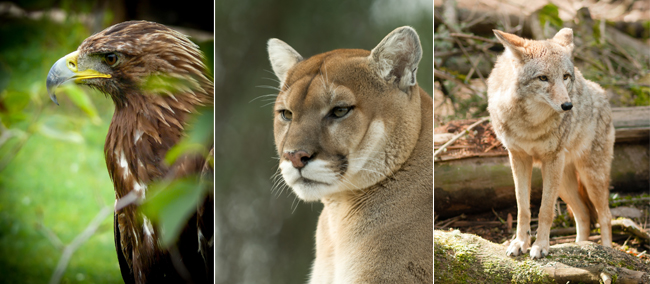
When we think about wild animals that notoriously prey on domestic pets, the usual suspects come to mind. Coyotes, birds of prey, and mountain lions seem to be the ones we are quickest to blame. However, one of America’s largest pet insurance companies (the Veterinary Pet Insurance Company) recently reported a surprising list of animals who have had the most instances of attacking cats and dogs. Among these were raccoons, squirrels, scorpions, porcupines, rats, black bears, alligators, skunks, and ground hogs. What might appear as an unlikely candidate to bite your cat or dog, might actually prove to be dangerous, though the threat level depends on where you live, as well as the size and breed of the pet. (Obviously a hawk may not consider attacking a German Shepherd, while the fluffy Bichon Frisé might look like a marshmallow morsel to him.) Nevertheless, a pet-owner can never be too careful when it comes to the safety of their fur-baby.
While there are an abundance of other good reasons to keep your pet indoors , it is important to take into consideration the predatory animals in the region where you live. Read the details and spare your precious cat or dog any future danger or trauma
Primary Predatory Pet Threats
Birds of Prey: The term “eagle eye” comes from hunting bird’s ability to spot the tiniest movement from many meters above the ground. Birds of prey are carnivores, searching for animals such as rodents, rabbits and small birds to dine on. Even if your cat is speedy or stealthy, or your dog barks loudly, a large bird of prey might not seem your pet as the slightest threat. They may be watching your animal’s behaviors, waiting for the right moment to swoop down and catch your unsuspecting puppy or kitten in its talons. Be warned: just because you cannot see a predatory creature, does not mean he is not there.
Coyotes: Coyotes are often the culprits when the death of a domestic pet occurs. Because they give birth in the spring time, this can be their most active hunting season (though they should still be considered a viable threat all year long).
If you see a coyote approach your cat or dog, the wisest approach is to try and scare him off. This is best accomplished by shouting, waving your arms, or throwing an object at them, or even turning on a hose and spraying water their direction. Usually, these wild creatures tend to be skittish and fearful of humans, giving you the upper hand.
Raccoons: Despite their relatively small size (most raccoons are no bigger than a large cat or medium sized dog), these wild animals can be quite scrappy and ferocious. They have been known to attack humans, dogs and cats, even turning these pets into their meals. Cat owners have been horrified to find the remains of the precious kitty, because of a vicious raccoon. Always use caution with these aggressive bandits, and call Animal Control if there is a raccoon on your property.
Wild cats: Fortunately, most states do not have to take precautions against large wild cats like cougars or bobcats. However, in mountainous or large rural regions, many pet owners have tragically found their pets have been made victims of these adept hunters. With their nearly silent stocking skills, you would almost never know a mountain lion is there until it is too late. If you are near hills, wooded areas or many acres of land, do not leave your pets unattended outside in the early morning and evenings.
Snakes: Since most of our readers do not live in boa constrictor country, we think it is safe to say your cat or dog probably will never become prey to a snake. However, these venomous creatures are still the cause of fatal bites, or attacks sending pets to the hospital. Dogs are curious explorers, and cats love to stalk and paw at all moving (and slithering) objects; these instincts can get pets into trouble when they are around snakes. When a reptile is pursued by a larger animal, he will either try to escape into a hole, or will get defensive and turn to attack. (Where do you think the word “recoil” comes from?!) Snake bites can be difficult to recover from, depending on how young the snake was, and how long it took the pet to get help. If you live in a snake-strewn area, be mindful not to leave your pet in warm sun-exposed areas where they tend to lurk.
Other dogs: We generally tend to assume that other people’s pets are well-behaved and trustworthy. Unfortunately, this is not always the case. Because predatory instincts seem to kick in when large dogs get around smaller ones, it would be much safe to keep your dog indoors as this will protect him if your neighbor’s dog should jump the fence, or dig his way into your backyard. It might sound far-fetched, but these things do happen and it would be better to be safe than sorry!

